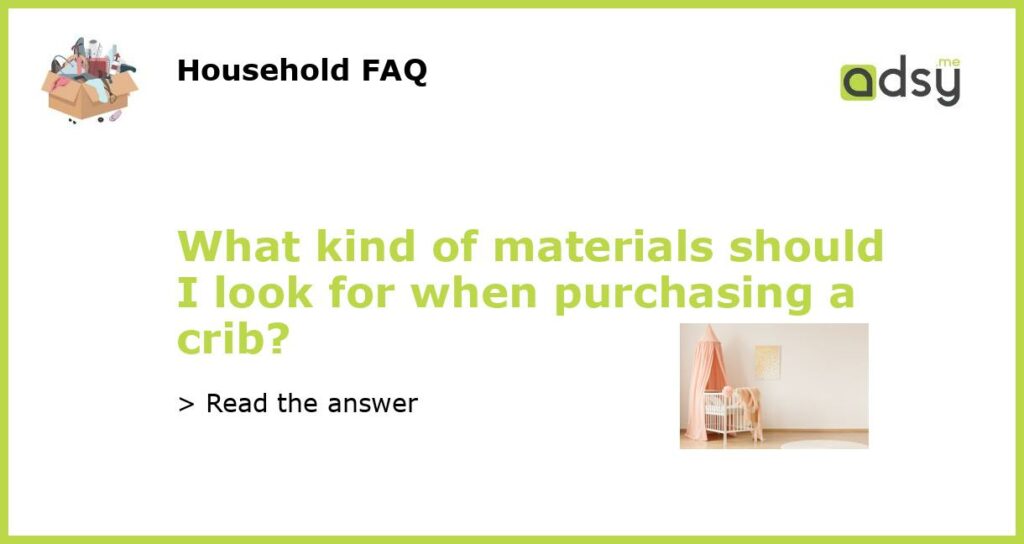Safety First: Materials to Consider When Buying a Crib
A crib is where parents and babies spend countless hours. Therefore, it is critical to ensure that the materials used to construct the crib are safe for the baby. Before buying a crib, understand the characteristics of the materials used in the manufacture of cribs.
The materials used in cribs are wood, metal, and plastic. Wooden cribs are traditional, durable, and come in a variety of designs. Wooden cribs that meet safety standards have been treated with non-toxic finishes, making them non-harmful to the baby. Conversely, metal cribs are strong, durable, and provide excellent ventilation.
On the other hand, plastic cribs are excellent choices, especially for parents looking for lightweight cribs with modern designs. While plastic cribs are stylish and easy to clean, they tend to wear out quickly, making them less durable compared to metal and wooden cribs.
Mattress Considerations When Buying a Crib
When buying a crib, the mattress is as important as the crib itself. It’s crucial to have a mattress that is comfortable, fits perfectly inside the crib, and meets basic safety requirements.
Cribs mostly use foam and spring mattresses. Foam mattresses are lightweight and durable, making them easy to maintain. On the other hand, spring mattresses are heavier and provide better firmness and support. One disadvantage of spring mattresses is that they have crevices, making it more challenging to clean them as compared to foam mattresses.
The Role of Fabrics in Cribs
Crib fabrics include sheets, bumpers, and bedding sets. Typically, fabrics are an overlooked feature when purchasing a crib; however, they play a significant role in the baby’s comfort and the crib’s functionality.
When deciding what fabrics to use, consider the material’s breathability and its contribution to the infant’s temperature regulation. Avoid using loose materials, such as blankets and duvets, as they pose a suffocation risk.
Paint Quality and Safety
Poor-quality paint in cribs can have serious health implications for the baby. Therefore, it is essential to ensure that the crib’s paint is non-toxic and lead-free.
Although lead-based paints are no longer used on cribs, baby cots that have been painted with lead-based paint that hasn’t been renovated in a long time may still contain toxic levels. Hence, it’s always best to buy a crib from trusted dealers and strictly check for lead-free paint certification.
To Sum Up: Ideal Materials for Buying a Crib
A crib is the safest environment for a baby, making it essential to choose the ideal materials when buying a crib. When making a purchase, always consider such factors as durability, safety, and functionality. The ideal crib should have a sturdy frame made of high-quality materials, a perfectly fitting mattress, and lead-free paint. Lastly, avoid getting too creative with bedding sets and decorations and always prioritize the baby’s health and safety.






